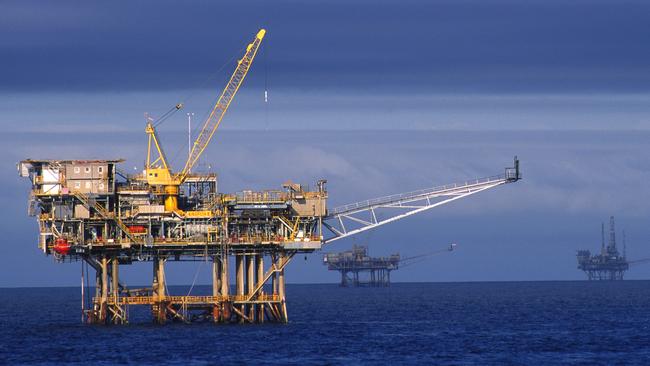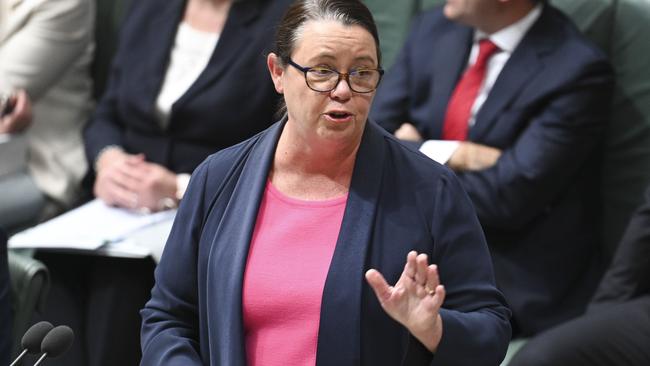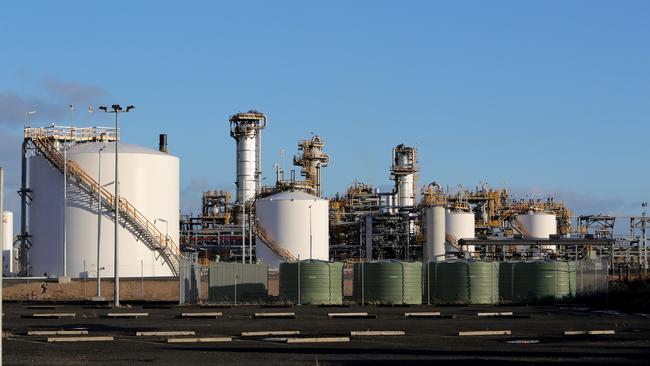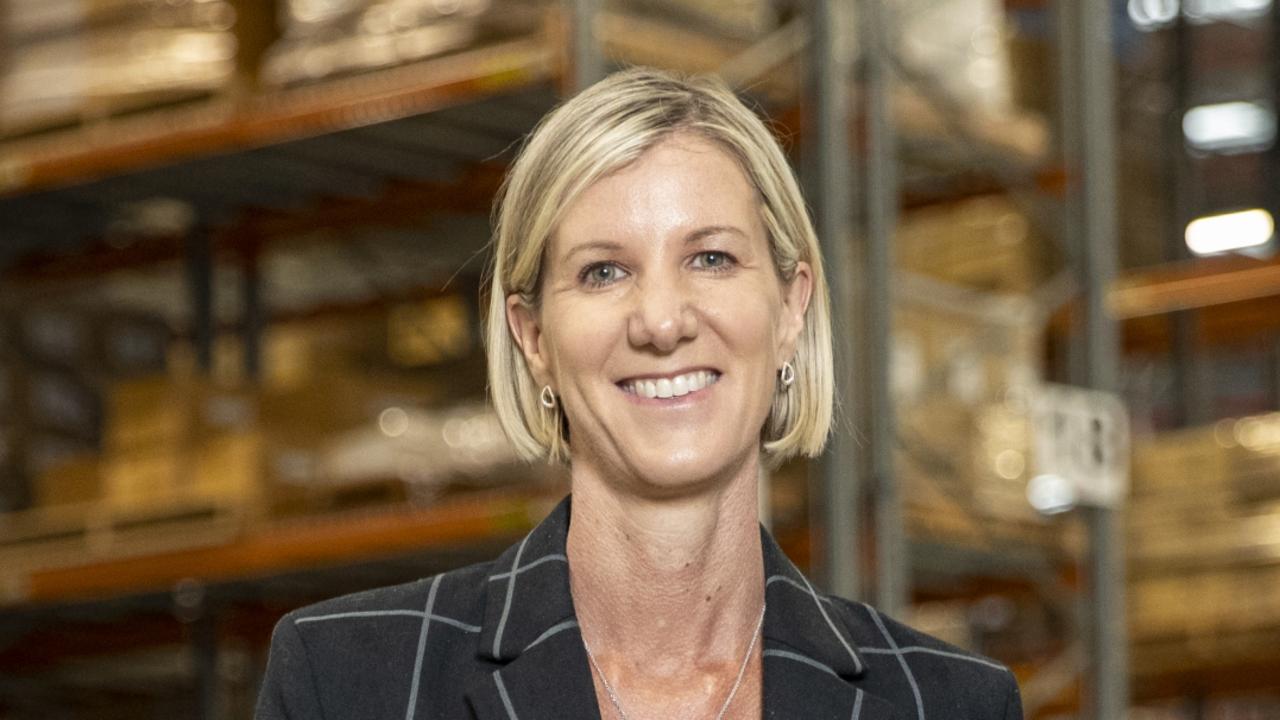Victoria’s gas crisis has been decade in the making
Millions of dollars have been spent exploring what is thought to be a gas-rich region, with little to show but frustration. Victoria needs to encourage new exploration instead of clinging to El Dorado.

Business
Don't miss out on the headlines from Business. Followed categories will be added to My News.
Like the fabled golden city of El Dorado, the legend of one of Australia’s biggest gas fields lurking under our feet often has a life of its own.
It would be a good thing to have, especially for Victorians who are fast running out of their developed and known gas reserves. The urgent need for more east coast gas sources has been put into even sharper focus in recent days as energy regulator AEMO warned a supply disruption in Victoria was causing crippling shortages across the east coast this winter.
The notion of tapping an onshore equivalent of another Bass Strait would be a windfall – there’s no need for expensive heavy sea platforms or long lead times. Having a massive field close to the surface waiting to be drilled, right on top of ready-made pipeline and processing facilities means cheaper gas could be piped to households and business.
Just like El Dorado, the legend is too good to be true. And we should be pursuing real supplies not going around in circles.

This is the curious tale of a large slab of exploration territory extending across much of Gippsland in Victoria’s east known by its technical name “EL 4416”. But after more than two years of drilling, explorers prefer to call it the “widow-maker”.
The region – and the legend of EL 4416 – has defeated sophisticated explorers and big established operators, sending the likes of Lakes Oil, global giant ExxonMobil and even rare earths miner Illuka Resources, packing.
Millions of dollars have been spent exploring what is thought to be a gas-rich region and dozens of wells dug. Some reaching more than 2km below the surface. Apart from frustration, there’s little to show for it.
EL 4416 covers thousands of square kilometres of some of Australia’s most productive agriculture land, and it also takes in the bulk of the state’s vast brown coal reserves.
Much of the exploration action for EL 4416 has been around the Strzelecki Ranges and further south near the coastal ridges of the towns Woodside and Seaspray, where the ageing offshore gas and (now depleted) oilfields are located.
One thing is clear. The geology of EL 4416 unpredictable, and despite the research work undertaken so far, it is still regarded by many as a mystery.
The theory of El Dorado is built around biogenic natural gas – created by microbial action – and this is said to be found in water in the folds of the brown coal deposits.
There is even some gas thought to exist close to the surface in the mush, trapped by pure water, but no-one is really sure it is there – let alone knows how to get it out.

Puckish explorer Lakes Oil mounted a massive exploration effort in the early 2000s in a bid to find the Gippsland version of El Dorado, drilling dozens and dozens of deep wells across EL 4416. Some small “tight” deposits were discovered but nothing commercial that was worth the cost of digging it up.
After nearly a decade of trying, Lakes plugged and abandoned the wells and moved on to focus on its more prospective offshore fields including the Otways in the west. It cancelled the licence and in 2010, the rights to EL 4416 ended up in the hands of a Sydney energy start-up Ignite Energy.
Monster Field
The privately held Ignite initially got its leg-up from federal government funding to try and extract oil from the state’s brown coal deposits. After years of trying the project never got off the ground.
But after securing EL 4416, Ignite controlled the state’s biggest exploration rights and potentially the future rights to the state’s gas supplies.
Ignite’s exploration targeted the biogenic gas located in the brown coal seams. Ignite went back to a pilot bore known as Burong-1 near the town of Longford drilled in 1985 by Hartogen Energy. That sample found plenty of agriculture quality water around some brown coal seams, but no gas.
Still, after securing EL 4416, Ignite commissioned a helicopter estimate of the gas contained across the entire brown coal reserves by independent engineers MHA Petroleum Consulting. The numbers that came back were staggering.

MHA’s “best” estimate reckoned the state’s brown coal deposits held a whopping 3.7 trillion cubic feet of gas – more than half the size of a Bass Strait. MHA’s “low” case put the less enticing, but reasonable, estimate of 660 billion cubic feet.
However MHA’s most bullish assessment had Victoria sitting on 9.1 trillion cubic feet of gas – more than Qatar’s known reserves – lurking in the seams under the dairy cows of Gippsland.
However in the language of geologists, MHA’s report was merely a marketing tool.
At the time MHA and Ignite acknowledged this as much – clearly labelling the estimates as “contingent reserves”.
In other words, it was a best guesstimate without doing any drilling. Nor was there any analysis to understand the real key to tapping gas deposits, which is geology and likely cost of extraction. There might be gas in the brown coal, but it is of little value if it can’t be safely or cheaply extracted and put into pipes.
No full scale mining or energy project would be signed off on an estimate of contingent reserves without serious study.
Mining standards recognise “contingent reserves” as a useful ambit claim on an unknown resource, with the ever present rider the numbers are built on thin air.
To make it as the higher standard of “known reserves”, accounting rules require the gas to be proven through actual production or extensive formation tests.
Still, the numbers did the trick.
ExxonMobil, the operator of the fast-declining Bass Strait fields, was interested enough around how to use its existing infrastructure including the Longford plant and “farmed in” EL 4416 with Ignite. However, after two years, the US giant pulled the plug.
Yet again, it seemed the legend of El Dorado couldn’t be tamed.

But there were bigger forces at play putting a squeeze on Victoria’s gas supplies.
The state’s path to gas crisis began in 2012, when Victoria’s Ted Baillieu-led Coalition government put an administrative freeze on all forms of onshore gas exploration and development across the state.
The Nationals held sway in Spring Street and saw the backlash coming from Queensland farmers around onshore gas development slated for LNG exports.
There were rising fears from the Nationals over the potential damage to the massive agriculture sector and the water table from fracking or coal seam drilling.
Daniel Andrews’ Labor was swept to power in late 2014, and with the ban still in place, the state’s upper house launched a six-month inquiry looking at coal seam gas and fracking.
‘Purely Research’
Its here the legend of El Dorado again got an airing.
Ignite’s massive contingent reserves were tabled and two executives from the explorer appeared at the committee in July 2015: Dane Stewart, a geologist and head of resource development, and the explorer’s government liaison executive John White.
Even with the massive numbers, they told the inquiry the commercial viability of producing gas from the brown coals “is not yet known, and has not been done anywhere else in the world”.
“There has not been a gas extraction operation that has used coal anywhere near as young as what we are proposing,” Stewart told the committee at the time.
“We really are trying to figure out a ground truth this resource estimate that we have done and figure out the commerciality of the resource that is under there.
“This is purely … research. There is potential for a commercial operation here. However, we are a long way away from being able to define exactly what this operation will look like.
“It is very much a preliminary assessment of our theory about the basin,” Stewart said.
An interdepartmental submission prepared by the Victorian government, including its resources and energy department, also sought to downplay El Dorado. It pointed out Ignite’s numbers were just “company estimates” and “not reserves”.

Ignite’s estimates had “no direct measurements of the gas content of the coals and whether the gas could be extracted”, the Victorian government’s submission says.
Testing could significantly reduce the estimates of actual gas content.
The report noted the largest barrier to better understanding what lays beneath Gippsland was the region’s complex geology. Unknowns were numerous, including the thickness of coal seams, distribution of coal, porosity, permeability, organic matter, and how rocks behave under pressure.
The Liberal-led committee ultimately urged extreme caution if the state was to push ahead with a coal seam gas industry. So too the final report concluded there was unlikely to be any gas present in large commercial and extractable quantities from Victoria’s brown coal fields.
The then new Andrews government was all too willing to extend the existing ban, but took it a step further in 2017 by outlawing unconventional gas drilling and production and inserted this into the state’s constitution.
With the unconventional gas development off the table in the state, Ignite handed its exploration licence back in 2017.
But the tales of Ignite’s El Dorado persist. In Ignite’s own words, the gas in Gippsland’s brown coals was just a theory, not a reality.
Running dry
The Andrews government maintained a ban on conventional drilling for another four years, a move that put the brakes on any exploration or the prospect of any onshore development.
While the conventional ban ended three years ago, after a decade of nothing, time has run out with the Bass Strait fields quickly running dry.
Lumping conventional onshore exploration and development into the more permanent fracking gas bans this has been crippling for the industry. It sent the wrong signal to producers when it came to the massive investment commitment needed to sure up future reserves.
The lead time in bringing projects on-stream from discovery can take many, many years – and that’s only if everything goes smoothly.
Gas is a transition energy source to a renewables future. The Victorian economy was built around access to cheap and plentiful energy, but the state is now moving from a gas giant to minnow.

But there is a bigger problem. It is the most dependant gas state in the nation. Nearly every existing home and factory across Melbourne is hardwired into the gas pipeline and this means Victoria is going to need a substantially longer runway if it wants to shift away from gas.
At the same time Victoria piped its gas across much of eastern Australia, it was also the launching pad for the creation of today’s massive LNG industry in Queensland. Bass Strait provided steady predictable volumes while exports and Queensland fields were ramping up. Now the situation has been reversed. Queensland gas is increasingly flowing south at a big cost.
But as once-reliable Bass Strait runs dry, what was once a state advantage is rapidly becoming a weakness. AEMO has warned the total available gas supply is set to reduce by 48 per cent over the next four years.
With coal-fired energy scheduled to come out of the system in coming years, there is a need to bring more gas to market to support renewable energy.
That requires some clear-eyed thinking at state and federal levels to make sure the state moves on without disrupting the economy or stopping people from keeping warm during the long, cold winters. This includes an urgent need to tap new supply.
The Albanese government’s Future Gas Strategy released last month at least sought to reframe the debate, declaring that new supplies of gas are needed all the way through to Australia’s net zero path. However, it is little more than a policy document without more favourable planning support from the states.

There was a small but significant step this month when Beach Energy began piping gas from its 40PJ offshore field in the state’s west, to its Otway Gas Plant. This was the first new gas project in the state in more than a decade.
Beach’s $1bn-plus Enterprise gas project was first discovered nearly five years ago and it is fortunate that it is relatively shallow water and close to its existing facilities. The well is onshore although the field is offshore.
There are more fields to come on-stream over the next year, including Beach’s Thylacine North wells and the Longford Kipper Compression Project. However, other projects, such as the Golden Beach energy project in Gippsland and Turrum Phase 3, still face frustrating delays.
With the alarm bells ringing ever louder, Victoria is finally waking up from its lost decade brought about by a drilling ban on conventional gas projects. With or without El Dorado, it remains a long way behind.
johnstone@theaustralian.com.au
More Coverage
Originally published as Victoria’s gas crisis has been decade in the making





